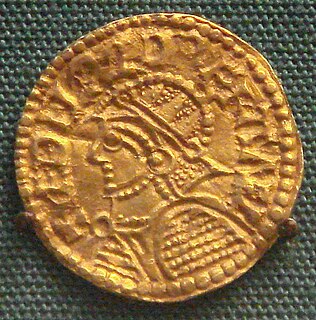
Mancus was a term used in early medieval Europe to denote either a gold coin, a weight of gold of 4.25g, or a unit of account of thirty silver pence. This made it worth about a month's wages for a skilled worker, such as a craftsman or a soldier. Distinguishing between these uses can be extremely difficult: the will of the Anglo-Saxon king Eadred, who died in 955, illustrates the problem well with its request that "two thousand mancuses of gold be taken and minted into mancuses".

The Encyclopedia of Life (EOL) is a free, online collaborative encyclopedia intended to document all of the 1.9 million living species known to science. It is compiled from existing databases and from contributions by experts and non-experts throughout the world. It aims to build one "infinitely expandable" page for each species, including video, sound, images, graphics, as well as text. In addition, the Encyclopedia incorporates content from the Biodiversity Heritage Library, which digitizes millions of pages of printed literature from the world's major natural history libraries. The project was initially backed by a US$50 million funding commitment, led by the MacArthur Foundation and the Sloan Foundation, who provided US$20 million and US$5 million, respectively. The additional US$25 million came from five cornerstone institutions—the Field Museum, Harvard University, the Marine Biological Laboratory, the Missouri Botanical Garden, and the Smithsonian Institution. The project was initially led by Jim Edwards and the development team by David Patterson. Today, participating institutions and individual donors continue to support EOL through financial contributions.

Agriotes is a genus of beetles in the family Elateridae which includes numerous species, many of which are found in the Americas, Asia and much of Europe.

The peacock flounder, also known as the flowery flounder, is a species of fish in the family Bothidae. The species is found widely in relatively shallow waters in the Indo-Pacific, also ranging into warmer parts of the east Pacific.
Copelatus mancus is a species of diving beetle. It is part of the genus Copelatus, which is of the subfamily Copelatinae and the family Dytiscidae. It was described by Sharp in 1887.
Erigeron mancus is a rare North American species of flowering plant in the daisy family known by the common names depauperate fleabane and imperfect fleabane. It has been found only in southeastern Utah.

Unio mancus is a species of freshwater mussel, an aquatic bivalve mollusk in the family Unionidae, the river mussels.

Dendrophilinae is a subfamily of clown beetles in the family Histeridae. There are more than 30 genera and 490 described species in Dendrophilinae.
Paromalus is a genus of clown beetles in the family Histeridae. There are at least 60 described species in Paromalus.
Arthmius is a genus of ant-loving beetles in the family Staphylinidae. There are about nine described species in Arthmius.
Paromalus seeversi is a species of clown beetle in the family Histeridae. It is found in North America.
Melanoplus mancus, known generally as the Smith's short-wing grasshopper or Smith's spur-throat grasshopper, is a species of spur-throated grasshopper in the family Acrididae. It is found in North America.
Stylurus spiniceps, the arrow clubtail, is a species of clubtail in the dragonfly family Gomphidae. It is found in North America.
Paromalus debilis is a species of clown beetle in the family Histeridae. It is found in North America.
Agriotes mancus, the wheat wireworm, is a species of click beetle in the family Elateridae. It is found in North America.
Megarafonus is a genus of ant-loving beetles in the family Staphylinidae. There are about seven described species in Megarafonus.
Paromalus seminulum is a species of clown beetle in the family Histeridae. It is found in Central America, North America, and South America.
Paromalus durangoensis is a species of clown beetle in the family Histeridae. It is found in Central America.
Paromalus teres is a species of clown beetle in the family Histeridae. It is found in North America.
Paromalus bistriatus is a species of clown beetle in the family Histeridae. It is found in North America.







